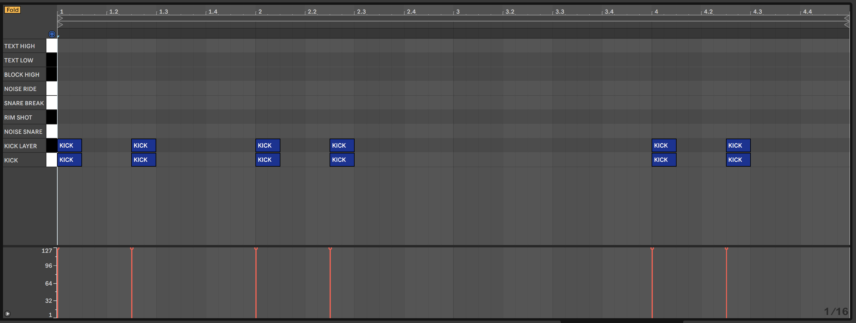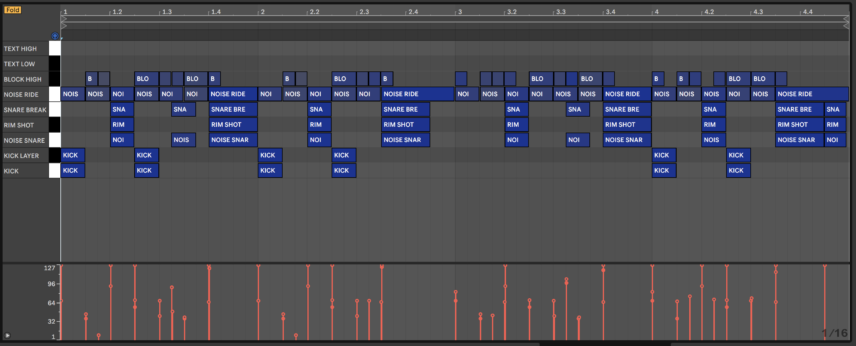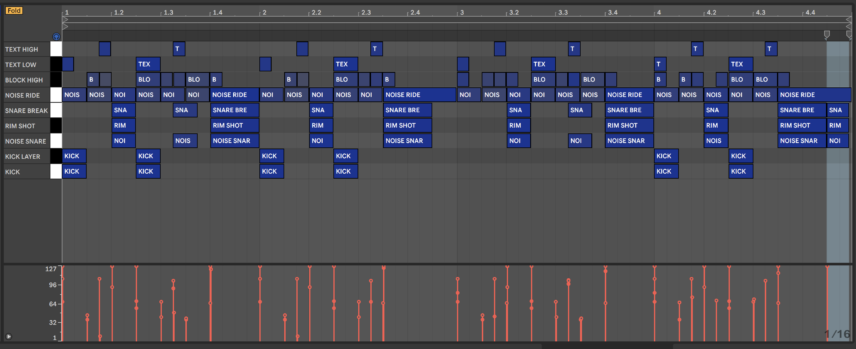
In this new Beat Dissected, we program a breakbeat inspired by Bicep’s trance-break hybrid anthem, ‘Atlas’.
Bicep’s 2020 single ‘Atlas’, released on Ninja Tune, had a lot riding on it, being the duo’s first release since their 2017 self-titled debut album. Thankfully, ‘Atlas’ succeeded in delivering the full Bicep package with breakbeats, melodic vocal samples and a melancholic trance-style lead. In this tutorial, we take a closer look at programming a similar break pattern that features unique layered drum sounds and textures.
Beat Dissected is a regular series in which we deconstruct drum patterns, showing you how to program them in any DAW. Just copy our grid in your own software to recreate the loop. The objective is to analyze drum programming techniques, not to recreate the artist’s beat exactly.
To follow along, [popup_anything id=”90093″]. To enlarge any photo, just click on the image.
If you find this tutorial helpful, you might also enjoy our book, ‘The Secrets of Dance Music Production’.
Here’s the beat we’re building today with a vocal sample and bassline for context:
[advert]
Step 1
Drag Live’s ‘Kick 606’ from its Skitter and Step Pack to the drum rack and program a classic breakbeat-style pattern with a kick on the downbeat and fourth 8th-note in every bar. Leave the third bar kick-less to create some tension—Bicep tracks often have repeating patterns that feature multiple bars without kicks.
The 606 kick has oomph but it is missing some acoustic character. Atlas’ beat is electronic but the drums still sound live and this is mainly because of the timbre of the drum layers.
Insert the ‘ZB_JD_Steppers Kick Drum’ sample from Live’s Loopmasters Mixtape Pack and use an EQ Eight to cut its lows below about 110Hz. Copy paste the previous kick’s pattern and mix this new layer in slightly. In our example, the layer is set to 15dB lower than the 606 kick sample.
[advert]
Step 2
For the snare we’ve layered three samples—a snare hit with added noise, a rim shot and a snare sampled from a drum break. The snare hit is ‘SNARE_PRL_1490_MHY#2_SFX 59-1’ from Live’s Drum Booth Pack, the rim is ‘Rim Vintage’ from the Chop and Swing Pack and the break snare is ‘Snare Break Chop’ from the Drum Essentials Pack.
Here’s how all three sound in the above order:
To add the noise layer to the snare hit, use Live’s Erosion audio effect set to Wide Noise with a boost around 5.85k.
In terms of mixing the three layers, we set the snare hit with noise to -15, the rim shot to -13 and the break chop to -23dB.
Normally with kick and snare layers, it is a good idea to run all of the layers through a compressor to glue them together but we will avoid this step for now, as we are working in a one-channel drum rack.
Program a break-style snare pattern featuring some ghost notes to add more swing. We omitted the rim shot and used a lower velocity for the ghost notes, in order to create a contrast with the main hits.
[advert]
Step 3
One of the most intriguing aspects of the breakbeat in ‘Atlas’ is the use of a woodblock and textural ride instead of hi-hats.
To emulate this, add Live’s ‘E-Perc BittyBot’ from the Drum Essentials Pack and ‘Ride 606’ from the Skitter and Step Pack to your drum rack.
For the Bittybot sample that we are using as the woodblock, insert an EQ Eight to cut the lows below around 300Hz and use the Small Chamber preset in Live’s Reverb at 11% wet to add some ambience.
When programming the woodblock pattern make sure to either play it in live or to set the hits at different velocities to give it a human element. The pattern itself is very similar to a hi-hat pattern with occasional fills for variation. The woodblock also frequently hits at the same time as the snares, adding yet another layer to the snare hits.
Here’s how the woodblock part sounds in solo:
For the Ride 606 sample, insert Live’s Redux device in Soft mode and increase the Downsample to around 2.35. This will add a lo-fi-esque texture. Afterwards, insert an EQ Eight to cut the lows and boost the top end and add Live’s Reverb with a decay time of 1.60ms set to around 10% wet.
The ride has three functions. The first is to add some top end to a hatless beat, the second is to provide unique texture and the third is to act as yet another layer to the snares. This is why we have set the velocity of the ride to be considerably higher when it hits at the same time as the main snare hits.
Here’s how the ride sounds in solo:
Our progress so far:
[advert]
Step 4
One of the most defining elements of Bicep beats is the unconventional drum sounds that are sometimes mixed even louder than the main drum elements. In the case of ‘Atlas’, this is two pitched synth-perc hits that almost function as a melody.
To emulate this melodic aspect we are going to use the more traditional sound of a conga with a similar pattern.
Drag the ‘Conga 70s 1’ and ‘Conga 70s 2’ samples from Live’s Core Library into your drum rack. These samples are already set at separate pitches so they are ideal for a melodic percussion part.
In both of the samples’ channels cut the lows until 150Hz with an EQ Eight and insert Live’s Reverb with the Long Ambience preset dialled in. Reduce the decay time to 1.34s and set the dry/wet to 22%.
Program a two-note pattern that repeats every bar. This will add syncopation and more groove. Again, playing this part in live with a MIDI keyboard is a good idea for more natural results.
Here’s how the congas sound in solo:
And here is our drum pattern with all of the elements:
[advert]
Step 5
The last step is some drum buss processing!
Insert Live’s Drum Buss audio effect, increase the transients very slightly, increase the Boom to 9.5% for some additional low end and decrease the Dry/Wet to around 60%. Drum Buss is a very powerful device and you can get really great results when blending it with the dry signal!
The next step is compression with Live’s Glue Compressor. We used a slow attack to let the transients through and set the Threshold so that we’re only getting about 2-3dB of gain reduction. We’ve also increased the Makeup to around 1.9dB to make up for the gain reduction.
Finally, to limit the drums we’ve used the Boost plug-in from Ursa DSP, which is great for adding punch.
The final beat:
Here it is with a Bicep-style vocal sample and the four-note bass line from ‘Atlas’:













